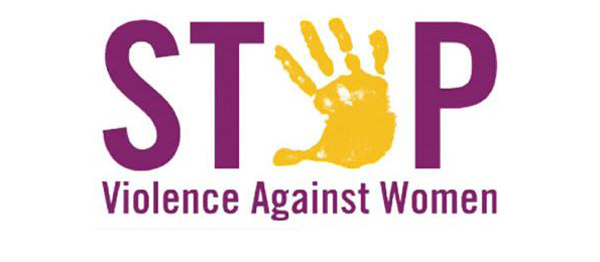
By Indian Country Today Media Network Staff
U.S. Senator Maria Cantwell (D-WA), chairwoman of the Senate Committee on Indian Affairs and co-sponsor of the Violence Against Women Act bill introduced by Senator Patrick Leahy (D-VT) on January 22, 2013 spoke on the Senate floor on February 7, during the Senate hearing on VAWA where she urged swift passage of S.47 with strong tribal provisions.
Below are Cantwell’s full remarks on the Senate floor:
“Madam President I thank the leader Senator Leahy for his leadership on trying to get the Violence Against Women Act passed. And for being down here and working out some agreements hopefully with the other side of the aisle about votes either today or in the future.
“And hopefully we will bring this issue to an end and get along with protecting the rights of women throughout the United States of America. So I am very anxious to help and further that debate today.
“I come to the floor now as the Chair of the Senate Indian Affairs Committee and somebody who has spent a lot of time dealing with tribal leadership in the state of Washington and throughout the Pacific Northwest.
“As I know the presiding officer has a very large tribal population within your state too. And I’m sure you’ve had many experiences with them. And like me you want to make sure that all victims of domestic violence are protected in America. And for us in Washington state we receive over 30,000 domestic violence calls a year.
“That’s more than 500 incidents per week. So I can tell you that our domestic violence program services about 1,800 people each day. Each day. And that is why we need to get this legislation reauthorized and move past this debate and make sure that we help protect victims.
“You know a woman named Carissa came to one of our events recently. She had fled a very abusive domestic violence abuse with her three-year-old daughter. And she is alive she said because of the Violence Against Women Act. Because those safeguards and protections were there to protect her.
“So Madam President I come to the floor today and I’m a little frustrated that this debate has bogged down over a few issues. Particularly this issue as it relates to Native Americans and the rights of Native Americans.
“We had the Department of Justice come to the United States Congress with a very good solution, because their point was, we have an epidemic of violence against women in tribal country. And we don’t have a ready solution as it relates to the necessary law enforcement there to protect them.
“And I guess I don’t mean to be elementary but going back to our country’s history and our relationship with tribal governments it is a federal relationship. And to secure that federal relationship we have said basically these are rights for the federal government and not the states.
“In many ways we’ve eliminated what states can do as it relates to tribal land. So the challenge we have is that on these tribal reservations we need to make sure that the law is enforced, a federal law. And that there are individuals to carry out that federal law.
“So I guess my colleagues on the other side of the aisle by voting for the underlying amendment, I don’t know if they have an appropriation authorization there that says, “OK, here’s how we’re going to deal with it. We’re going to give you a federal prosecutor and a federal agent on every tribal reservation or in every jurisdiction.”
“In my state I don’t know how many that would be. Because you know, we have huge lands and so if you thought that was going to be effective, you’d have to have a prosecutor and a federal agent in probably 20 different parts of my state.
“And if you multiply that even just in the West or your state, we’re talking about hundreds of millions of dollars that the federal government would have to bailout to properly police and enforce federal law as it relates to crimes against these women.
“Now why isn’t anybody recommending that? Because I think the Department of Justice has adequately seen that the best way to do this is to build a partnership. And to build a partnership with those tribal jurisdictions to get that done.
“You know I’m always amazed in looking back at this over history, what have previous administrations – Republican administrations – said about this tribal relationship?
“Well, the Supreme Court has made decisions. And even George H. Bush’s solicitor general Kenneth Starr stated in a filing with the Supreme Court, “It remains true today that the state has no jurisdiction on reservations involving Indians.”
“And then George W. Bush, his solicitor general said, “The policy of leaving Indians free from state jurisdiction and control is deeply rooted in our nation’s history.”
“So here are Republican administrations that have basically said the way to deal with this is as a federal relationship. And I’m saying to my colleagues on the other side of the aisle, unless you are willing to put a federal prosecutor, and to put a federal agent right there on all tribal reservations, who do you think is going to prosecute these crimes?
“Who? Who is going to prosecute them? And so that is why the Department of Justice came to us and said we have an idea of how we might do it. Let’s try to get a partnership with tribal jurisdictions to make sure that justice is being brought on tribal land. But do so by protecting the civil liberties of American citizens as we go through this process.
“And that is the legislation that is before us. That passed out of the Judiciary Committee and is now on the Senate floor. That is now trying to be stripped from those very rights that Native American women would have. And so the way this would work is obviously tribal jurisdictions would prosecute these individuals.
“And if you don’t think that this isn’t a problem, it is amazing to me to think that this concept that maybe one of our other colleagues might be proposing. That somehow you would say…well it’s a lesser crime. That if you assaulted an Indian woman on tribal reservations it would be a misdemeanor.
“That somehow aggressive abuse, a violent attack against a woman would somehow be a misdemeanor. I am not going to treat Native American women as second-class citizens in the United States of America. Now I get that that might have been the cultural norm of the 1700s and the 1800s but it has no place in our history in 2013.
“This is about legislation that will protect tribal women on Indian reservations and to make sure that these cases of abuse, whether they are done by a Native American or non-Native American are protected. In one case, a woman Diane Millich, her ex-husband was not arrested for more than 100 times he had beaten her or attacked her.
“And then he finally showed up at her workplace with a gun to kill her. And only because an individual from her workplace pushed her out of the way is she still alive. But her husband is being treated as a first-time offender. Because all those times that he beat her or domestically assaulted her he was never prosecuted. Because it took place on a reservation.
“This epidemic is so great that now these people involved in sex-trafficking, in drug-trafficking are targeting reservations and these women because they know they won’t get prosecuted. They know this. So we are allowing an intolerable situation to grow in great extremes simply because we aren’t working together with the tools we have.
“I get that many of my colleagues may not understand the history of tribal law. And the history of our country in securing the relationship with tribes and the treaties that we signed. Again, as I said before, this is a relationship that we have preserved for the federal government. And the federal government is saying this is how we can best solve these crimes by getting the help and support of tribal jurisdictions.
“Now I want to say to my colleagues on the other side of the aisle, because I’ve heard some of them say that somehow this violates the civil liberties of non-Native Americans if these crimes happen in Indian country. Nothing could be farther from the truth.
“First of all, all tribal courts also adhere to the Indian Civil Rights Act which is basically our 14th Amendment. So that security of the 14th Amendment is right there in the law and will protect any non-Native American that is charged with this crime on a reservation.
“Secondly, this law has specifically broad language making sure that the defendant would be protected with all rights required by the United States in order for this jurisdiction to have oversight. So it is almost like a double protection saying twice that Habeas Corpus rights of individuals are going to be protected under this statute.
“So the notion that this is somehow abrogating individual rights just because the crime takes place on a tribal reservation is incorrect. So I ask my colleagues, do you want to continue to have this unbelievable growth and petri dish of crime evolving? Because criminals know, when you have a porous border that is where they are going to go.
“Or whether we want to partner with a recommendation that has been determined by the Department of Justice, who has the authority to carry out this federal law on tribal reservations. And are asking for this partnership but with due protection. To give them that due protection so we can root out this evil in our communities.
“I would say to my colleagues it’s time to pass this legislation. And to protect these rights for all individuals. We cannot vote for an amendment on the other side of the aisle that basically strips the rights of Native American women and treats them like second-class citizens. Nor can we just go silent on what is an epidemic problem in our country.
“What we have to do is stand up and realize that the relationship between the federal government and Indian country is a very mature relationship today. With a lot of federal case law behind it. A lot of Republican administrations recognizing that it’s a federal relationship. And that we can accomplish asking Indian country to help us solve this problem and prosecute these individuals under the rights that we have as constitutional citizens of the United States. I am confident that we can get to an answer here and resolve this issue.
“And I can say to my colleagues. We need to do so with urgency. We can’t allow another 1,800 calls to go in and be unanswered and not supported because we haven’t authorized this legislation. Let’s get our job done and let’s protect all women throughout the United States of America. Madam President I yield the floor.”
Read more at http://indiancountrytodaymedianetwork.com/2013/02/09/sen-cantwell-urges-swift-passage-violence-against-women-act-senate-floor-tribal











